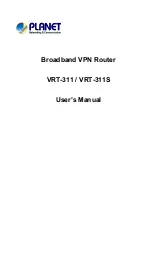
8-21
Catalyst 2900 Series XL and Catalyst 3500 Series XL Software Configuration Guide
78-6511-08
Chapter 8 Configuring VLANs
VLANs in the VTP Database
VLAN Configuration Guidelines
Follow these guidelines when creating and modifying VLANs in your network:
•
A maximum of 250 VLANs can be active on supported switches, but some models only support 64
VLANs. If VTP reports that there are 254 active VLANs, 4 of the active VLANs (1002 to 1005) are
reserved for Token Ring and FDDI.
•
Before you can create a VLAN, the switch must be in VTP server mode or VTP transparent mode.
For information on configuring VTP, see the
“Configuring VTP” section on page 8-16
.
•
Switches running this release do not support Token Ring or FDDI media. The switch does not
forward FDDI, FDDI-Net, TRCRF, or TRBRF traffic, but it does propagate the VLAN configuration
through VTP.
Default VLAN Configuration
Table 8-6
through
Table 8-10
shows the default configuration for the different VLAN media types.
Note
Catalyst 2900 XL and Catalyst 3500 XL switches support Ethernet interfaces exclusively. Because
FDDI and Token Ring VLANs are not locally supported, you configure FDDI and Token Ring
media-specific characteristics only for VTP global advertisements to other switches.
Table 8-6
Ethernet VLAN Defaults and Ranges
Parameter
Default
Range
VLAN ID
1
1–1005
VLAN name
VLANxxxx, where xxxx is the VLAN ID
No range
802.10 SAID
VLAN ID
1–4294967294
MTU size
1500
1500–18190
Translational bridge 1
0
0–1005
Translational bridge 2
0
0–1005
VLAN state
active
active, suspend
Table 8-7
FDDI VLAN Defaults and Ranges
Parameter
Default
Range
VLAN ID
1002
1–1005
VLAN name
VLANxxxx, where xxxx is the VLAN ID
No range
802.10 SAID
VLAN ID
1–4294967294
MTU size
1500
1500–18190
Ring number
None
1–4095
Parent VLAN
0
0–1005
Translational bridge 1
0
0–1005
















































